Showing Spotlights 705 - 712 of 2779 in category All (newest first):
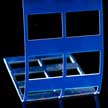 Tuning adhesion without relying on chemical treatment or micro or nanostructured surfaces is now closer with a novel, kirigami-inspired approach. New research shows that by carefully designing arrays of cuts in an adhesive film, the stickiness can not only be tuned by a factor of 100 across a single sheet, but also be decreased for an easy-release purpose. These kirigami-inspired structures at interfaces provide a mechanism to spatially control and enhance adhesion strength while providing directional characteristics for high-capacity, easy-release interfaces.
Tuning adhesion without relying on chemical treatment or micro or nanostructured surfaces is now closer with a novel, kirigami-inspired approach. New research shows that by carefully designing arrays of cuts in an adhesive film, the stickiness can not only be tuned by a factor of 100 across a single sheet, but also be decreased for an easy-release purpose. These kirigami-inspired structures at interfaces provide a mechanism to spatially control and enhance adhesion strength while providing directional characteristics for high-capacity, easy-release interfaces.
Feb 19th, 2018
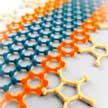 Scientists report a systematic study involving theoretical and experimental approaches to evaluate the Li-ion storage capability in 2D atomic sheets of nonlayered MoO2. They describe a new process - polymer-assisted reduction - to make atomically flat 2D sheets of MoO2. Since MoO2 is not a 2D material, this process opens a new pathway to make 2D nanostructures from non-layered materials. By successfully making 2D atomic sheets of MoO2, the researchers fabricated a battery electrode in which the Li ion diffusion and electron transport are exceptionally fast.
Scientists report a systematic study involving theoretical and experimental approaches to evaluate the Li-ion storage capability in 2D atomic sheets of nonlayered MoO2. They describe a new process - polymer-assisted reduction - to make atomically flat 2D sheets of MoO2. Since MoO2 is not a 2D material, this process opens a new pathway to make 2D nanostructures from non-layered materials. By successfully making 2D atomic sheets of MoO2, the researchers fabricated a battery electrode in which the Li ion diffusion and electron transport are exceptionally fast.
Feb 15th, 2018
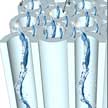 Cellulose aerogels, made from nanofibrils found in plants, have several unique features, one of which is super high oil absorption capacity that is several times higher than commercial sorbents available in the market. Researchers have created wood-based structures for oil/water separation, utilizing the native feature of wood, i.e. its tubular porosity and hierarchical organization. The novelty here is the development of new processing routes for hierarchical wood structures scaled from nano-, micro-, to macroscales.
Cellulose aerogels, made from nanofibrils found in plants, have several unique features, one of which is super high oil absorption capacity that is several times higher than commercial sorbents available in the market. Researchers have created wood-based structures for oil/water separation, utilizing the native feature of wood, i.e. its tubular porosity and hierarchical organization. The novelty here is the development of new processing routes for hierarchical wood structures scaled from nano-, micro-, to macroscales.
Feb 14th, 2018
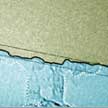 Researchers have looked closer at the Hall effect in narrow graphene devices - so-called graphene nanoribbons and nanoconstrictions. They were puzzled when they found that the quantization of the conductance was destroyed in some samples - especially because these particular samples were optimized for low edge disorder and low contamination. As it turned out, this effect had been predicted by several theoretical physicists twenty years ago, but largely ignored since no experimental evidence was ever found.
Researchers have looked closer at the Hall effect in narrow graphene devices - so-called graphene nanoribbons and nanoconstrictions. They were puzzled when they found that the quantization of the conductance was destroyed in some samples - especially because these particular samples were optimized for low edge disorder and low contamination. As it turned out, this effect had been predicted by several theoretical physicists twenty years ago, but largely ignored since no experimental evidence was ever found.
Feb 13th, 2018
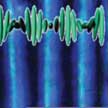 Researchers have developed a nanocoating that wipes off dust and sand from a surface by an electrical trigger, e.g. to clean solar panels in desert like conditions. This novel coating forms dynamic surface undulations fuelled by an alternating electric field. This new approach is based on resonance enhanced microscopic (di)electric coupling of polar mesogens to the electric field. Further applications could be removal of water droplets on car screens; dust removal from lenses and other optical systems; and controlling friction at or between surfaces.
Researchers have developed a nanocoating that wipes off dust and sand from a surface by an electrical trigger, e.g. to clean solar panels in desert like conditions. This novel coating forms dynamic surface undulations fuelled by an alternating electric field. This new approach is based on resonance enhanced microscopic (di)electric coupling of polar mesogens to the electric field. Further applications could be removal of water droplets on car screens; dust removal from lenses and other optical systems; and controlling friction at or between surfaces.
Feb 12th, 2018
 New work describes how to control the kinetics of ion-capturing/ion-releasing regimes in liquid crystals by means of nanoparticles. Various types of nanomaterials and alignment layers are considered major components of the next generation of advanced liquid crystal devices. While the steady-state properties of ion-capturing/ion-releasing processes in liquid crystals doped with nanoparticles and sandwiched between alignment films are relatively well understood, the kinetics of these phenomena remains practically unexplored.
New work describes how to control the kinetics of ion-capturing/ion-releasing regimes in liquid crystals by means of nanoparticles. Various types of nanomaterials and alignment layers are considered major components of the next generation of advanced liquid crystal devices. While the steady-state properties of ion-capturing/ion-releasing processes in liquid crystals doped with nanoparticles and sandwiched between alignment films are relatively well understood, the kinetics of these phenomena remains practically unexplored.
Feb 9th, 2018
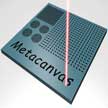 The metacanvas is a completely new generation of technology compared to all previous works. It is a tunable photonic devices based on vanadium dioxide that is lithography-free and fully reconfigurable. oth the patterns and the functionalities of the metacanvas can be arbitrarily reconfigured, which leads to many more degrees of freedom in metasurface design and functionalities. One piece of metacanvas is able to function as different optical components - hologram, phase-array, polarizer, modulator, etc. - at different times and on command, which has never been achieved in any of the previous VO2.
The metacanvas is a completely new generation of technology compared to all previous works. It is a tunable photonic devices based on vanadium dioxide that is lithography-free and fully reconfigurable. oth the patterns and the functionalities of the metacanvas can be arbitrarily reconfigured, which leads to many more degrees of freedom in metasurface design and functionalities. One piece of metacanvas is able to function as different optical components - hologram, phase-array, polarizer, modulator, etc. - at different times and on command, which has never been achieved in any of the previous VO2.
Feb 7th, 2018
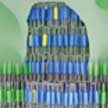 A novel approach to deliver liquids from a solid coating is both location- and time- controlled. The sponge-like coating can repeatedly absorb liquids and release them again. The type of release, either droplets or film, can be initiated by a short exposure with UV light. The uptake is accelerated by exposure with blue light. The principle of this coating is based on a photoresponsive liquid-filled smectic crystal network (LCN).
A novel approach to deliver liquids from a solid coating is both location- and time- controlled. The sponge-like coating can repeatedly absorb liquids and release them again. The type of release, either droplets or film, can be initiated by a short exposure with UV light. The uptake is accelerated by exposure with blue light. The principle of this coating is based on a photoresponsive liquid-filled smectic crystal network (LCN).
Feb 6th, 2018
 Tuning adhesion without relying on chemical treatment or micro or nanostructured surfaces is now closer with a novel, kirigami-inspired approach. New research shows that by carefully designing arrays of cuts in an adhesive film, the stickiness can not only be tuned by a factor of 100 across a single sheet, but also be decreased for an easy-release purpose. These kirigami-inspired structures at interfaces provide a mechanism to spatially control and enhance adhesion strength while providing directional characteristics for high-capacity, easy-release interfaces.
Tuning adhesion without relying on chemical treatment or micro or nanostructured surfaces is now closer with a novel, kirigami-inspired approach. New research shows that by carefully designing arrays of cuts in an adhesive film, the stickiness can not only be tuned by a factor of 100 across a single sheet, but also be decreased for an easy-release purpose. These kirigami-inspired structures at interfaces provide a mechanism to spatially control and enhance adhesion strength while providing directional characteristics for high-capacity, easy-release interfaces.
 Subscribe to our Nanotechnology Spotlight feed
Subscribe to our Nanotechnology Spotlight feed





